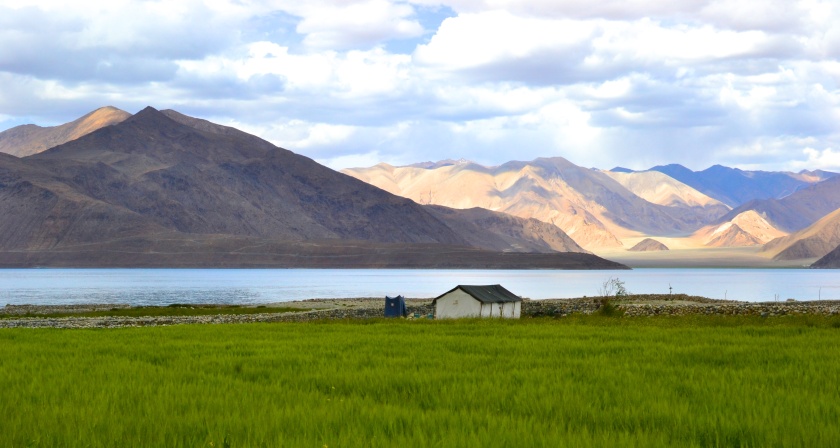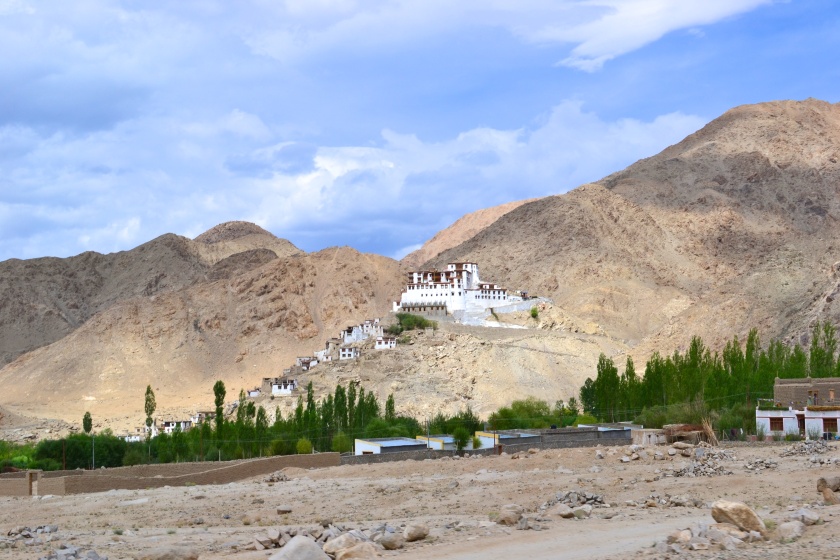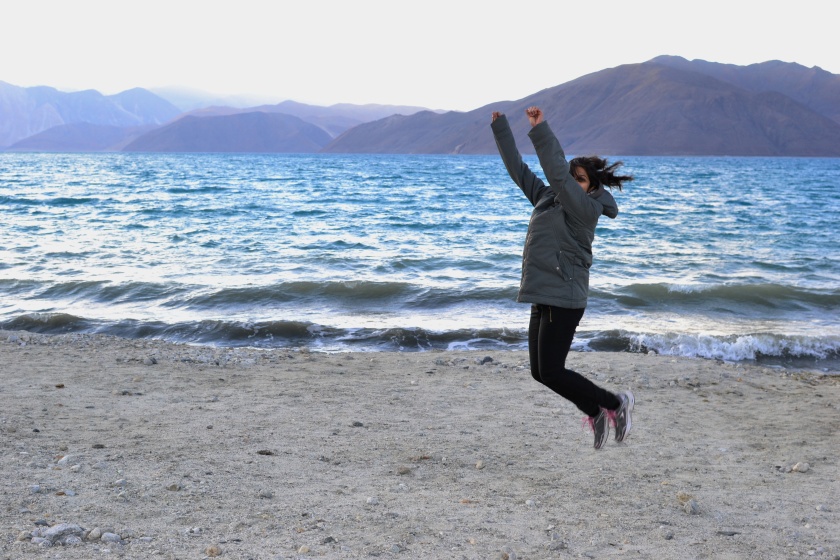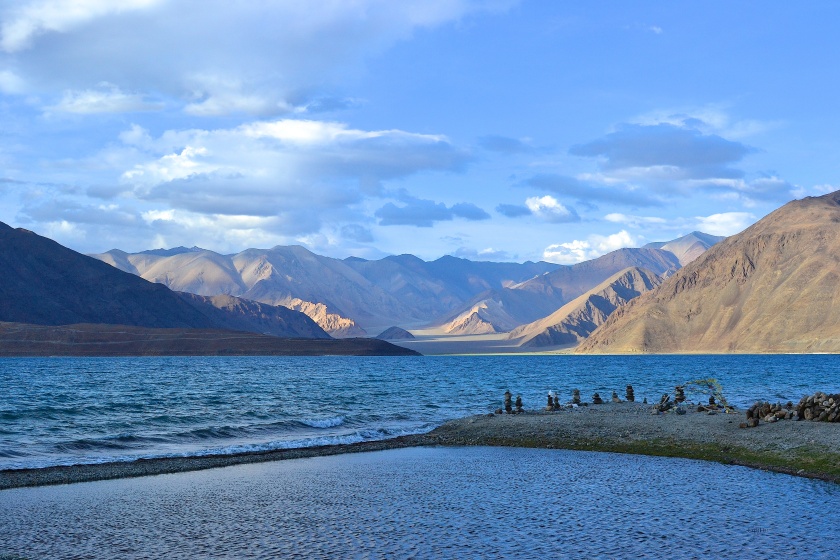The Ladakh region in Jammu & Kashmir, India is known for its unique beauty. The region has stark, barren mountainous landscapes, high altitude deserts, peak topping monasteries and beautiful high altitude lakes.
I had the chance to visit the region in 2014 and undoubtedly the highlight of our trips were the lakes of the region. That is not to say that the Nubra desert or Leh and its monasteries ( All topics for another day) are not memorable in their own way. But I will never forget the beauty of the lakes surrounded by mountains and the changing colour of the sky, peaks and the water at different times of the day with the changing nature of sunlight.

The three main lakes ( Lake is Tso in the local language) in the region are Pangong Tso , Tso Moriri and Tso Kar. Each lake has its own personality and is distinctly different from the other. So its not like you have seen one and you have seen them all!! The most popular among these with the tour operators is the Pangong Lake as it is the most easily accessible of the three and tour operators do a day trip visiting the lake from Leh. That, according to me is the least desirable way of visiting the lake.
The lake is a 5 hour drive from Leh through the third highest mountain pass in the World, the Changla pass ( The top two are also in Ladakh and will cover them in a different post some other time). These passes are typically marked by a yellow obelisk and have decorations of multicoloured flags which make for a pretty picture.

The road is a not your typical mountain highway as it has to be re done every year after the ice recedes. The Indian army does a magnificent job at doing this year after year and the Border Road Organisation ( BRO) deserves all the superlatives and more. The ride is view filled as is every ride in the region and my camera had continuous work throughout our journey.

As we approached the lake there are huge plains with marmots peeping out from behind every other rock. Marmots are hardy high altitude rodents who hibernate in their deep burrows throughout winter and wake up at the first sign of summer to feed and load up for the winter. They are very curious creatures and due to the increasing tourist load the mature adults have lost their fear of humans and can come really close ( as much as they feel safe, you go closer and they scamper down one of the many burrow entrances). After stopping to photograph a huge marmot family ( Big no feeding marmots boards everywhere, typically tourists can’t read them!!) we proceeded to the lake.

As the lake comes into view all your preconceptions of what a lake should look like are blown away. This is huge and looks more like a placid sea, you can’t see the end ( its a little less than 700 square km in size!!) Only 1/3 of the lake is in India , the other part is in China. Of the 1/3 you can visit only the near shore and about 8-10 km along one shore. The rest is closed for security reasons. But the part you see is enough to make your eyes pop out.
We continued on along the shore to our tented camp which is the farthest you can go along the lake as a tourist. The road is almost nonexistent and a 4 by 4 vehicle is a must. Along the way we spotted breeding colonies of the bar headed goose, brown headed gull and golden plover and my 300mm was delighted at the chance to flex its muscles. After getting some great bird photos we proceeded to camp.



The Pangong Sarai Camp is set up every year in summer at this location (June )and dismantled at the first sign of Winter (October). The location is beautiful with snow capped mountains guarding the back and the lake in all its glory at front. The camp tents are comfortable enough for the region and provide all basic facilities including electricity and running water( Please remember where you are and don’t compare to city hotels!!).

Food is served at a kitchen cum dining hall which is the only permanent structure. Food is good and its a miracle that you get that much variety of food in that remote a location. We dumped our luggage in our allotted tent ( we had a tent with a direct view of the lake) and went to the lake shore to take lots of photos, dip our toes in the cold waters and enjoy a quiet sunset by the lake. The changing colours of the sky as the sun goes down are superb and photos don’t do it justice.

As it turned dark we could see the clear night sky and all the stars clearly twinkling, a welcome change from Mumbai!! We slept our tent after a warm hearty meal and were up at dawn to enjoy the lake and its colours for a few more hours. At such beautiful locations time goes by very soon. And soon it was time for us to leave the lake and proceed to our next destination. But not before we stopped one last time at the near end to just stand and take in the view.

Next stop was Tso Moriri, but that is topic for another post.
Hope you enjoyed our day at Pangong Tso and hope I have motivated you enough to stop overnight at the lake rather than take a ten hour round trip journey for one hour at this magnificent water body, if you ever visit Ladakh. And visit Ladakh you should!! At least once in a lifetime.
Bye.


Nice! I had stayed at Camp Martsemik at the beginning of the lake. Unfortunately did not do the other two lakes like most tourists.
LikeLike
Wow, looks really magnificent. I can almost feel being there from your photos! How did you get there? One for my ‘one day’ list!
LikeLike
It’s in ladakh. Which in turn is in Jammu and Kashmir in India. First you fly into Leh and then take a bumpy 4-6 hour long car ride to the lake. There are camps where you can stay at Pangong which is the best thing to do as you have the lake to yourself early morning and in the evening after the day trippers have left.
LikeLiked by 1 person
Just had a quick google and looks like you can get there by bus too in summer 🙂
LikeLike
Have you seen the buses in India?? I don’t travel in public buses and I’m an Indian.
LikeLike
🙂 I’ve heard tell yes. Part of the adventure for me… but I see your point!
LikeLike